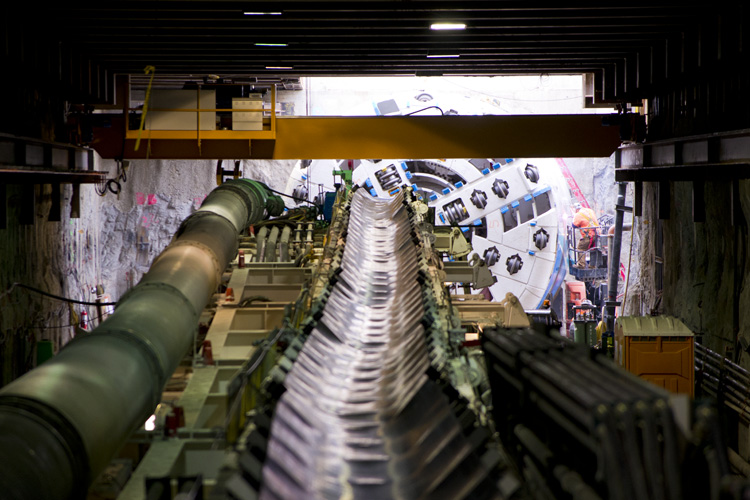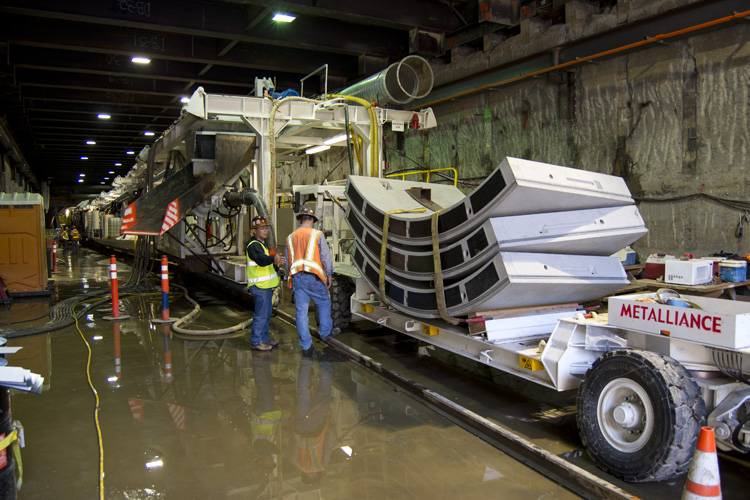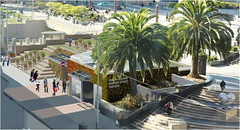TBM Mom Chung launches, beginning tunnel construction beneath SF
This video shows some of the first ground spoils excavated after our first TBM, Mom Chung, launched this week.
This week tunnel boring machine (TBM) Mom Chung started digging, kicking off construction of San Francisco’s first new subway tunnel in decades. Over the next 10 months, the 350-foot-long, 750-ton machine will excavate and construct the tunnel that southbound T Third Line trains will use when the Central Subway opens in 2019.
As Mom Chung travels, you can follow her on Twitter — she’s @MomChungtheTBM. Her twin sister, Big Alma, recently arrived in San Francisco. After about six weeks of assembly underground, she will begin constructing a tunnel parallel to Mom Chung’s. (You can follow Big Alma at @BigAlmatheTBM.)
The tunnels are a key component in extending the Muni Metro T Third Line through SoMa, Union Square and Chinatown, vastly improving transit in these neighborhoods.
The Tunneling Journey
Mom Chung and Big Alma will excavate and construct the 1.5-mile-long tunnels at a pace of approximately 40 feet per day, though their pace will vary based on ground conditions and other factors. Most of their journey will be through two major ground formations: the Franciscan complex, a bedrock formation that forms Nob Hill; and the Colma formation, a dense mixture of sand and clay.
The TBMs will be so far beneath the surface – between 40 and 120 feet underground – that no vibration or noise will be felt above ground when they pass below.
In this video, a welder works on the TBM’s trailing gear.
How TBMs Work
The machines consist of three main sections: a rotating cutter wheel (the cutter head), a cylindrical steel shell (the shield) and a 300-foot train of tunnel-building mechanisms (the trailing gear).
This conveyor belt on top of Mom Chung’s trailing gear will help transport ground spoils out of the tunnel. In the background you can see the cutter head of our second TBM, Big Alma.
The cutter head, a spinning excavator at the front of the machine, pumps out an environmentally safe, soap-like foam to condition the ground as it cuts through the earth like a cheese grater. Once loosened, spoils pass through holes in the cutter head and onto a large screw. The screw carries the spoils onto a series of conveyors for transport out of the tunnel.
To launch, Mom Chung pushed off of a steel frame as her cutter head began to spin.
The large concrete segments shown here are what will form the Central Subway tunnels. The TBMs will install them, and crews will bolt them together, as the machines move forward.
As she tunnels, Mom Chung will stop every five feet to install the concrete segments that make up the tunnel’s lining. The concrete segments are installed within the back of the TBM’s cylindrical shield. The machine lifts the segments into place, and then crews bolt them together. Hydraulic jacks within the shield then push off of the newly installed tunnel lining, propelling the massive machine forward.
These concrete rings, already installed, are held in place by hydraulic arms (seen on the left) as the machine moves forward.
A crew of about 10 people operates the machine and bolts the tunnel segments together. Crews will be at work 24 hours a day, six days a week to build the Central Subway’s tunnels.
Learn More
Want to find out more about the Central Subway’s complex, high-tech tunneling machines? Check out the following documents:








Hello, the station renderings have bad links, good work otherwise.